The ePIC Collaboration
Building the world’s most sophisticated particle detector for analyzing collisions between electrons and protons or other nuclei
The Electron-Proton/Ion Collider (ePIC) Collaboration was formed to design, build, and operate the first experiment at the Electron-Ion Collider, a one-of-a-kind particle collider at Brookhaven National Laboratory.
ePIC is a collection of hundreds of scientists and engineers united in a quest to understand the structure of the matter we are all made of—and indeed 99% of the visible matter that makes up our universe. We are working together to build the world’s most sophisticated particle detector for analyzing collisions between electrons and protons or other nuclei. The data we collect will give us insight into the dynamic interactions of the smallest internal building blocks of visible matter, quarks and gluons, and help us understand the underlying laws that govern the strongest force in nature.
In the process of building and eventually using this detector to do groundbreaking science, we’ll be developing new technologies and training the next generation of nuclear scientists and high-tech workers that help drive our modern society.
The ePIC detector will be built with funding from the U.S. Department of Energy’s Office of Science, Office of Nuclear Physics, with key contributions from international partners.
Detector details
Modern particle physics detectors are complicated, highly integrated experiments that operate at the edge of the possible. The ePIC experiment will be an approximately 10-meter long cylindrical barrel detector with additional instrumentation that extends to up to 45m in each direction down the EIC beamline. It will use cutting-edge technologies to detect particles created in collisions between high energy electrons and protons or heavy ions (the nuclei of larger atoms) moving close to the speed of light.
Features of the central barrel detector
- A 1.7 Tesla superconducting magnet for curving the trajectories of charged particles created in these collisions
- High-precision silicon detectors for tracking particle trajectories in the magnetic field
- Precise calorimeters for measuring the energy of electromagnetic particles with exquisite precision
- A suite of particle identification technologies for determining the quark content of particles over a wide range of energies
- Dense calorimetric detectors at the outer radius of the cylindrical detector to allow the measurement of “jets”—collimated sprays of particles that arises when a high energy electron scatters off a quark in a proton or ion
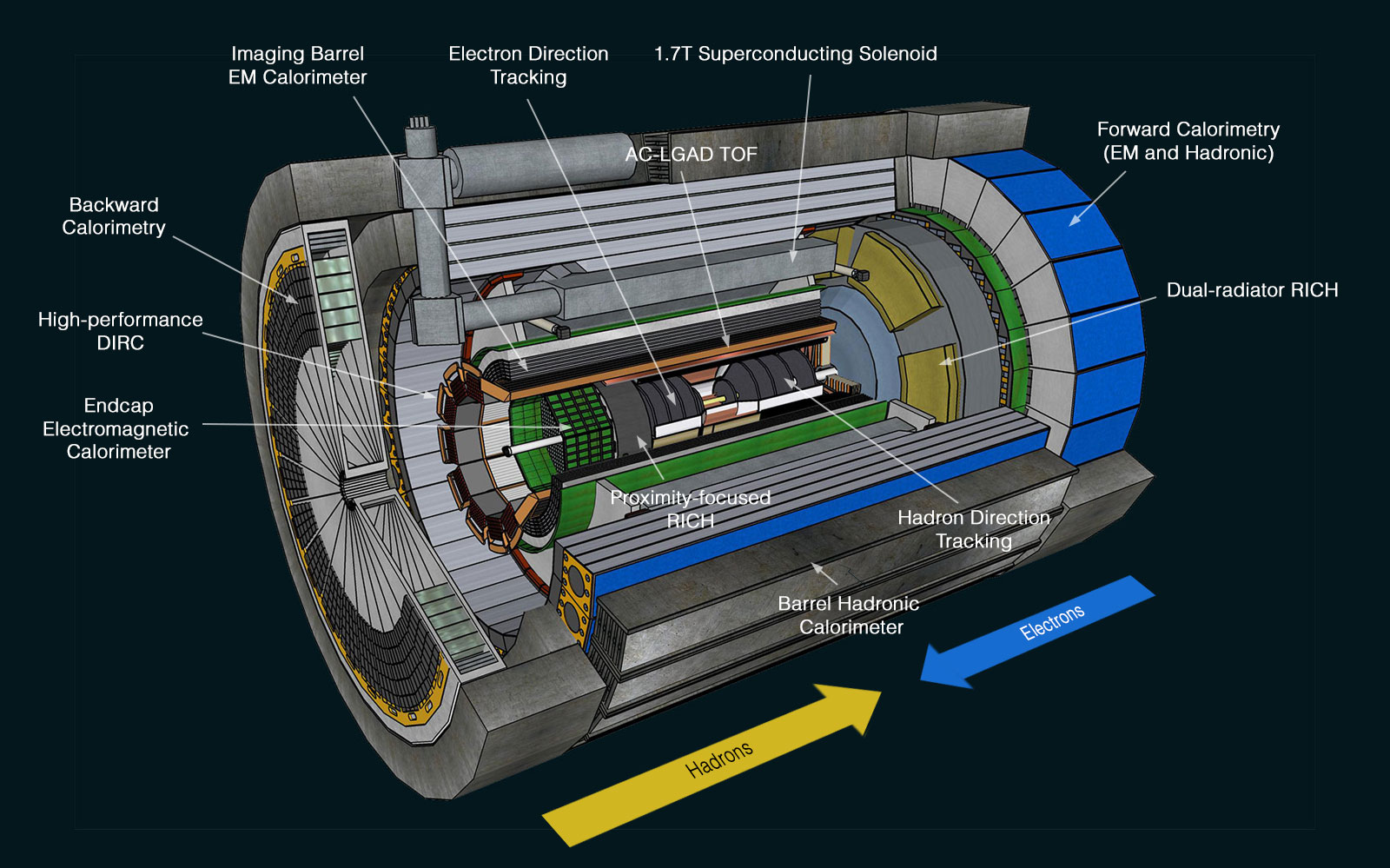
Cutaway view of the ePIC detector.
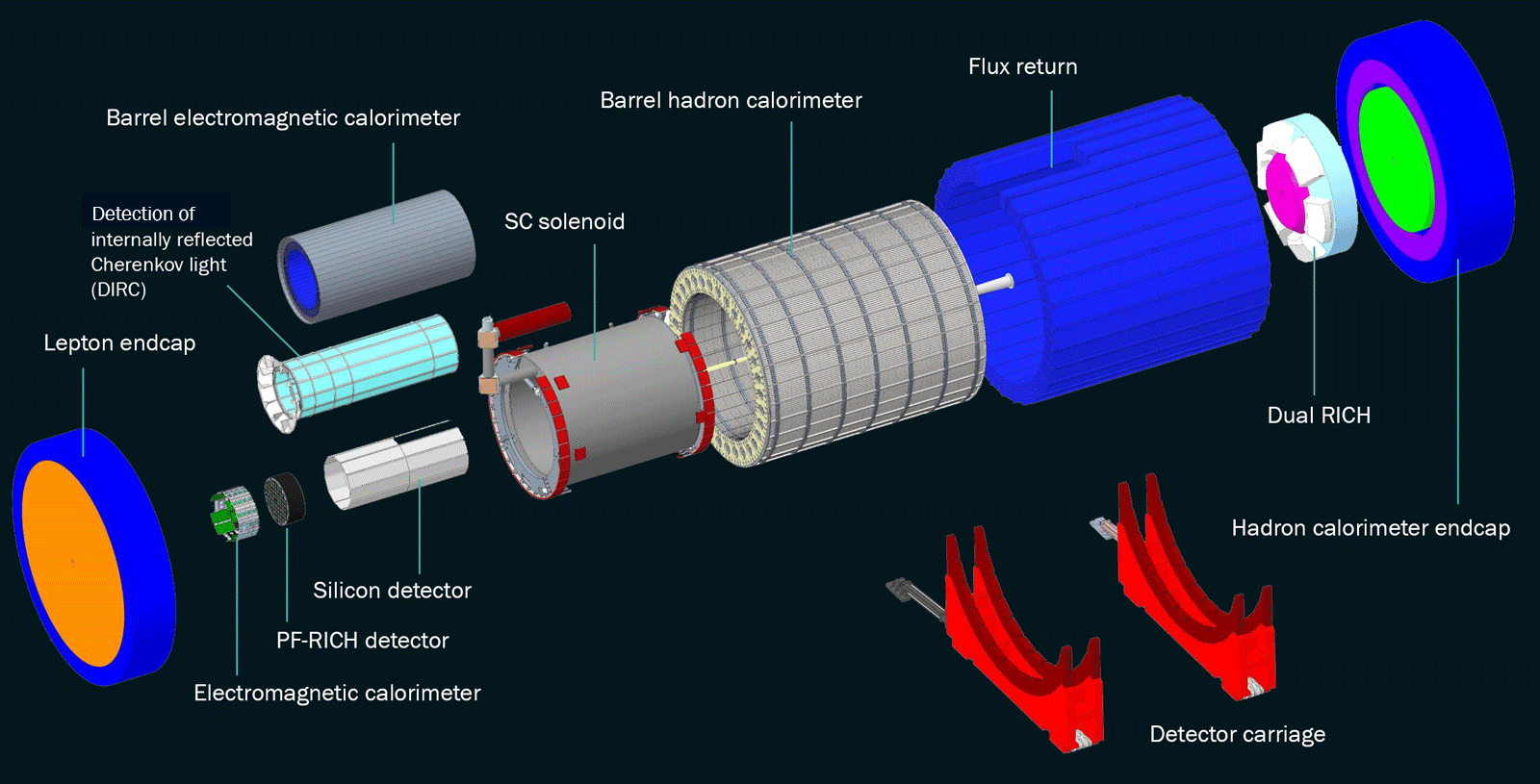
Exploded view of the ePIC detector.
Somewhat unique to the EIC, the ePIC detector is highly integrated into the collider beamline. This will allow detection of particles emerging very close to the primary beam—within angles of just a few degrees. This instrumentation consists of silicon detectors built into the EIC beam pipe, and even inside one of the EIC collider magnets, as well as calorimetry for measuring the energy of photons and neutrons that don’t bend in the EIC magnets. These detectors allow us to detect so-called “exclusive” events, where the scattered electron just tickles the inside of the proton it scatters off but otherwise remains intact.
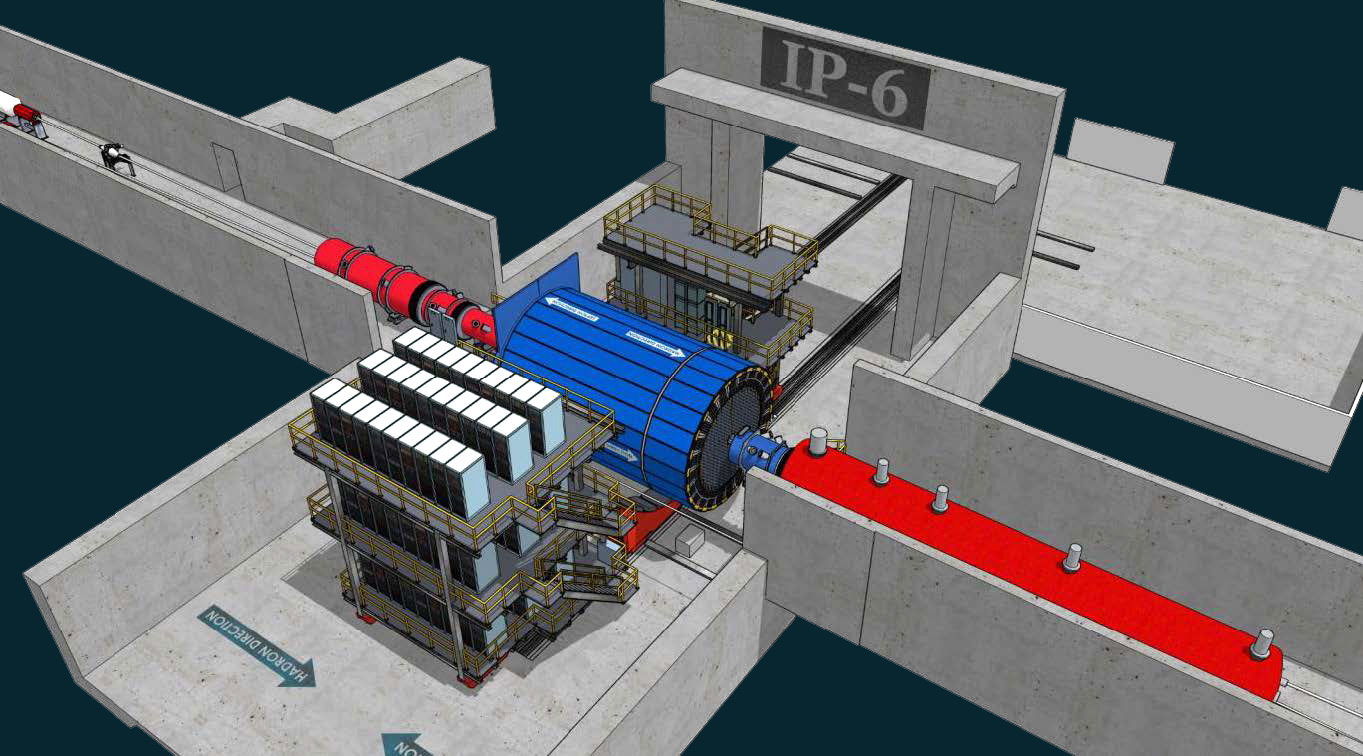
ePIC detector in place in the EIC beamline.
AI-powered data collection
Machine learning (ML) techniques and artificial intelligence (AI) will be key for the data processing and analysis in ePIC. The ePIC detector will take data using a revolutionary streaming data acquisition system without the need for a traditional hardware trigger. AI/ML techniques will “teach” computers to make intelligent decisions about which electron-ion collisions to study to ensure that ePIC captures the data that's relevant to the physics questions scientists want to answer.
ML and AI will be applied at all levels — for example, for calibrating detectors and for reconstructing collision events. This real-time analysis and feedback will enable quick diagnostics and optimization of the detector as well as significantly faster access to physics results.
An International Effort
The ePIC collaboration consists of hundreds of scientists and engineers representing 171 institutions from 24 countries. The quest to understand the structure of nuclear matter is truly an international pursuit, engaging the brightest minds in nuclear physics from around the world.
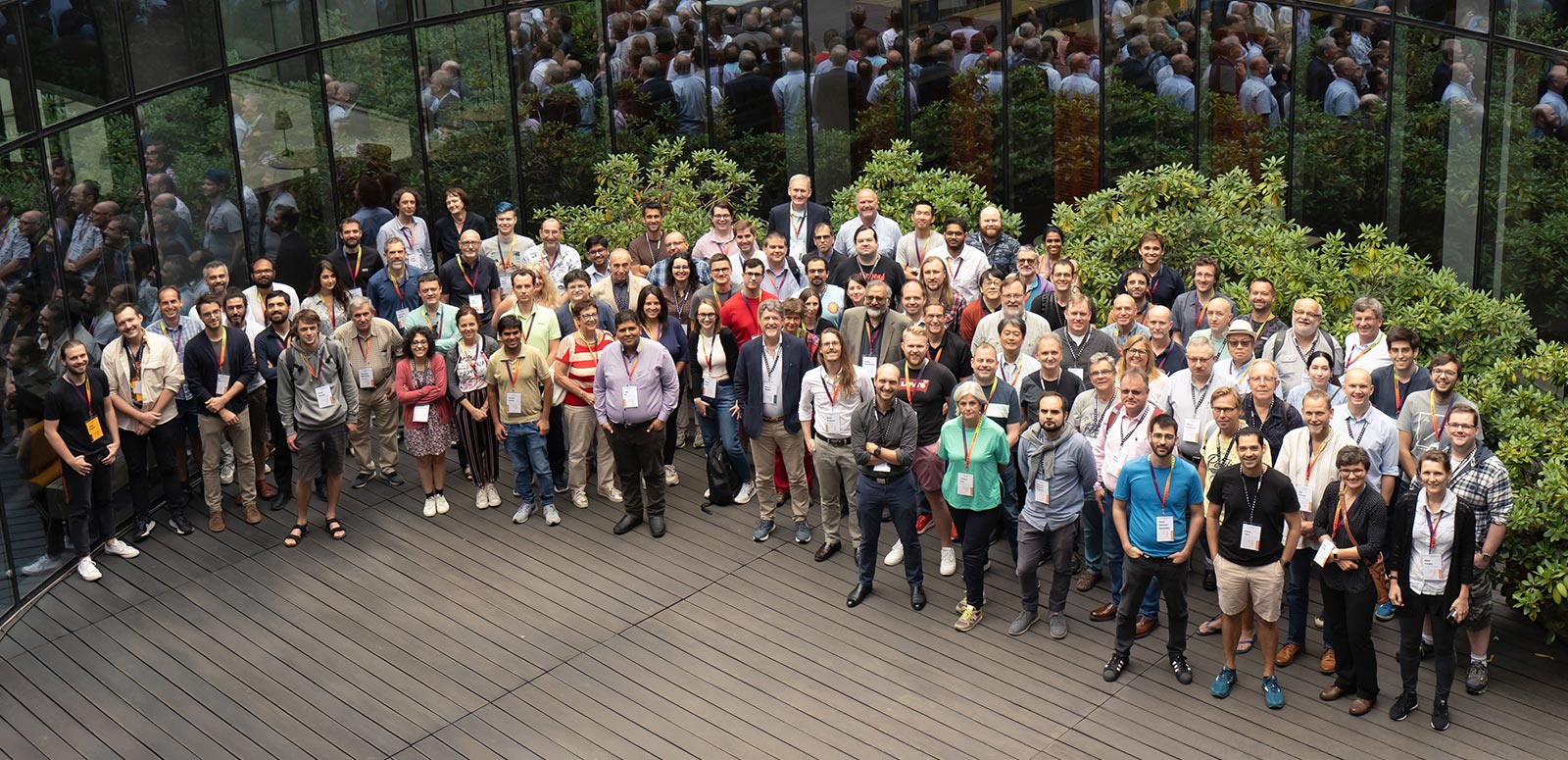
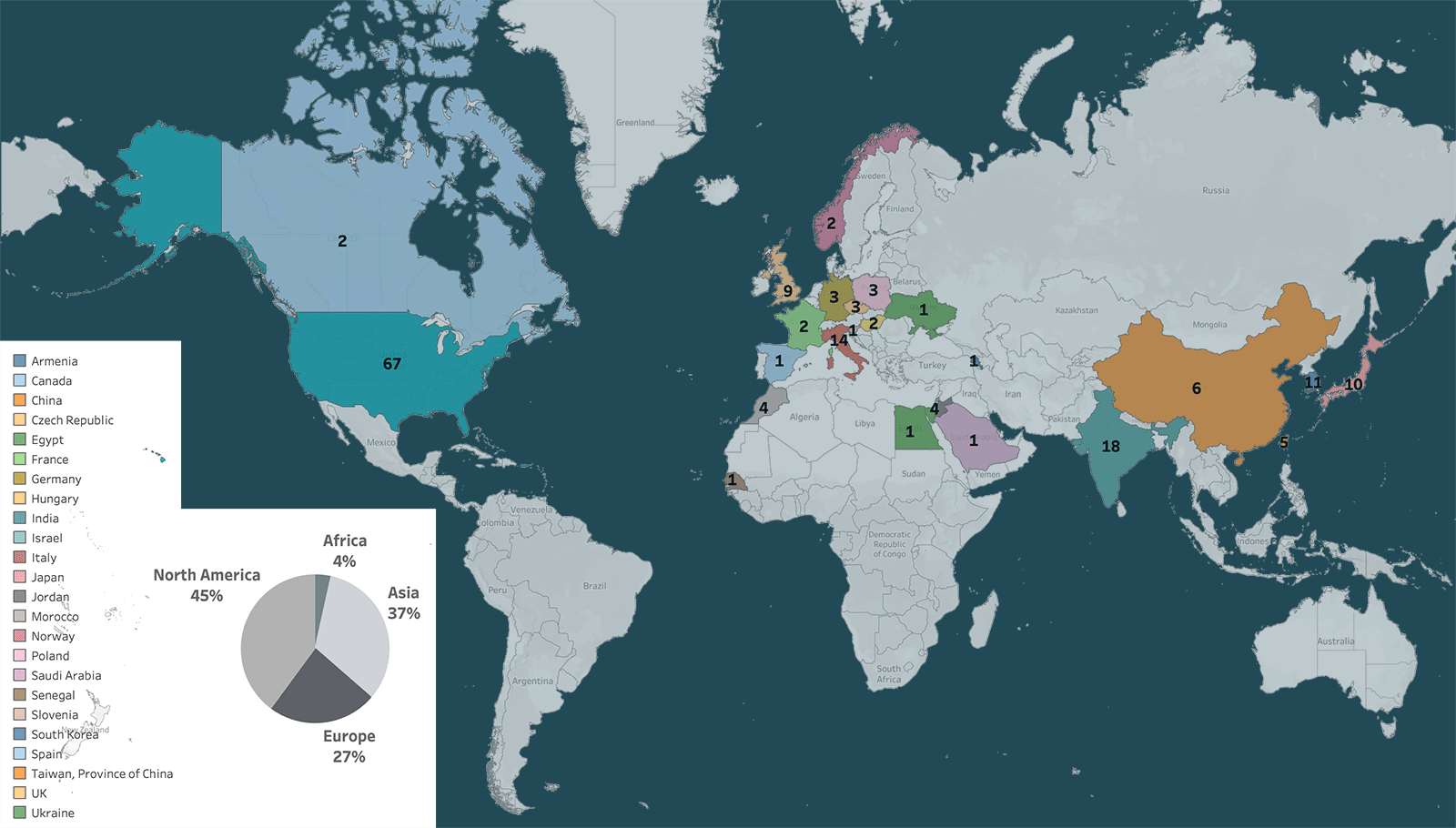
Countries represented in the ePIC collaboration.
Brookhaven National Lab's EIC Directorate coordinates with domestic and international partners to deliver the EIC construction project.
Brookhaven National Laboratory advances fundamental research in nuclear and particle physics to gain a deeper understanding of matter, energy, space, and time; applies photon sciences and nanomaterials research to energy challenges of critical importance to the nation; and performs cross-disciplinary research on climate change, sustainable energy, and Earth’s ecosystems.







